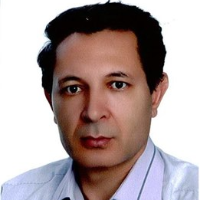Assessment of physical vulnerability of decayed textures Ardabil Urban against seismic risk
Over the last few decades, natural disasters and their aftermath have become a major concern for leaders and organizations around the world. Vulnerability is the "characteristics of an individual, group or system and their situation that affect their ability to anticipate, cope with, resist and recover from natural hazards." Physical vulnerability is: "The probability (or potential) of being affected or damaged by a specific physical component or element under the influence of a particular external driving force, for example a natural hazard such as an earthquake. Today, physical vulnerability is a component. The main key elements are used as model input data by organizations in charge of risk prevention and mitigation, and the development of building codes and guidelines. A look at the seismic history of Iranian cities in less than a hundred years, the widespread vulnerability of Iranian cities to this natural disaster is evident, of course, among the concerns of residents of dilapidated cities. It will be far more than others. The main goal of the action plan is to provide a rapid and effective response that minimizes potential damage to people, property and the environment, and returns basic services to people in the shortest possible time.
In this study, a method based on the vulnerability index has been used to assess the expected damage in Ardabil. Risk analysis for seismic scenarios defined by seismic intensities V, V-VI, VI, VI-VII and VII has been performed to design seismic emergency plans. This method uses the mean of quasi-experimental vulnerability functions, which for a given vulnerability index is strongly related to the seismicity and the expected damage. According to the country's seismic Codes, the basic peak ground acceleration for a 475-year return period is 0.04g, which corresponds to an intensity of VII. Thus, while quantifying physical damage, its impact on the population and other amounts such as debris and economic costs have been investigated.
Vulnerability of buildings in Ardabil shows an average value of 0.59 for concrete buildings and 0.93 for buildings with building materials, which are the most vulnerable. Therefore, it is predicted that buildings with building materials that belong to worn-out structures will have a higher degree of damage. The distribution of highly vulnerable neighborhoods is seen in the central core of the city. The vulnerability index of areas 1 and 3 is higher than other areas. For the seismic scenario VII, the degree of vulnerability of these textures is heavy, very heavy and completely devastated. In the worst-case scenario, about three in a thousand people die of decayed textures, and not every thousand people suffer various injuries. An earthquake with a intensity of V-VI will cost approximately 98 million Rials and a intensity VII equal to 6800 million Rials for these textures. Due to the impact of a seismic crisis on narrow and uneven communication passages and arteries, there is a significant volume of expected debris production among the eroded neighborhoods (for scenarios V-VI and VII, respectively, between 1701 up to 13989 tons). Due to the combined effects of the large volume of debris produced and the urban pattern of narrow and irregular passages, any movement will face several problems. In the seismic scenario with intensity V-VI, 332 people from the population of decayed textures and in the scenario with intensity VII, 3224 people from the population of textures these become homeless. Therefore, the only way to reduce seismic risk with a vulnerability reduction approach is to apply seismic instructions and increase public awareness of these issues.
The city of Ardabil is in the range of moderate to high seismic hazard, which is mainly due to the large accumulation of population and old and vulnerable buildings. Vulnerability of residential buildings is high, mainly due to their age and lack of knowledge and awareness of seismic hazard and in terms of seismic actions expected in the design and construction of buildings. This high vulnerability causes significant direct physical damage to buildings, especially worn-out structures, even for low-intensity earthquakes. As a result, the expected physical damage in the case of moderate earthquakes is significant. For a intensity V earthquake, the damage is not expected to be significant, but for a intensity VII scenario, all five areas and the dilapidated tissues within them will experience a level of damage that is slightly higher. Damage is 2 (moderate). In addition to the significant number of casualties, emergency management after the earthquake and subsequent recovery of normal city activities in the medium and long term is important.
- حق عضویت دریافتی صرف حمایت از نشریات عضو و نگهداری، تکمیل و توسعه مگیران میشود.
- پرداخت حق اشتراک و دانلود مقالات اجازه بازنشر آن در سایر رسانههای چاپی و دیجیتال را به کاربر نمیدهد.



